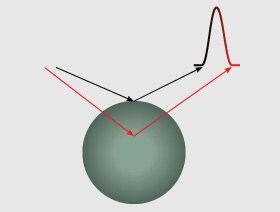Fused-Core Columns Technology
Ascentis Express HPLC columns, based on Fused-Core particle technology, provide more than twice the speed and efficiency of traditional columns at half the backpressure of sub-2-µm columns. This performance enhancement is applicable to all HPLC instruments (in addition to UHPLC systems).
Why do columns based on Fused-Core technology offer superior performance? The Fused-Core particle has three characteristic features over the traditional porous particle, resulting in a number of performance benefits - especially for Fast HPLC and UHPLC applications.
Features of Fused-Core particles over traditional porous particles
- Narrower particle size distribution
- More consistent packed bed
- Shorter diffusion path
Performance Benefits
- More than double the speed of current methods
- Increased resolution over current methods
- Super rugged columns compared to sub-2-µM
- Added sensitivity (from sharper peaks)
- Easily transferable methods, from UHPLC to HPLC
For an in-depth explanation, with practical examples that demonstrate the performance benefits of Fused-Core technology, watch the presentation linked on this page.
Comparison of particle size distribution, packed bed consistency, and diffusion path length for Fused-Core particles vs. traditional porous silica particles

Fused-Core Particles

Traditional Porous Particles
The innovative manufacturing process for Fused-Core particles produces a very narrow particle size distribution. A narrow particle size distribution allows for the use of large porosity frits that resist clogging, resulting in a more rugged column.
Traditional porous particles are not manufactured in a way to yield extremely narrow particle size distributions.


The “A” term in the van Deemter equation accounts for the effects of inhomogeneities in the packed bed of an HPLC column. Narrow particle size distributions form a more consistent packed bed and a consistent path length, minimizing analyte diffusion through the column. This eddy diffusion is effectively independent of mobile phase velocity.


The short diffusion path of the Fused-Core particle yields sharper peaks than traditional porous particle columns. The minimized resistance to mass transfer, the “C” term in the van Deemter equation, of the Fused-Core particle provides sharper peaks than traditional porous particles. The short diffusion path also permits the use of higher flow rates without peak broadening.
Trademarks
Fused-Core - Advanced Materials Technology, Inc.
如要继续阅读,请登录或创建帐户。
暂无帐户?